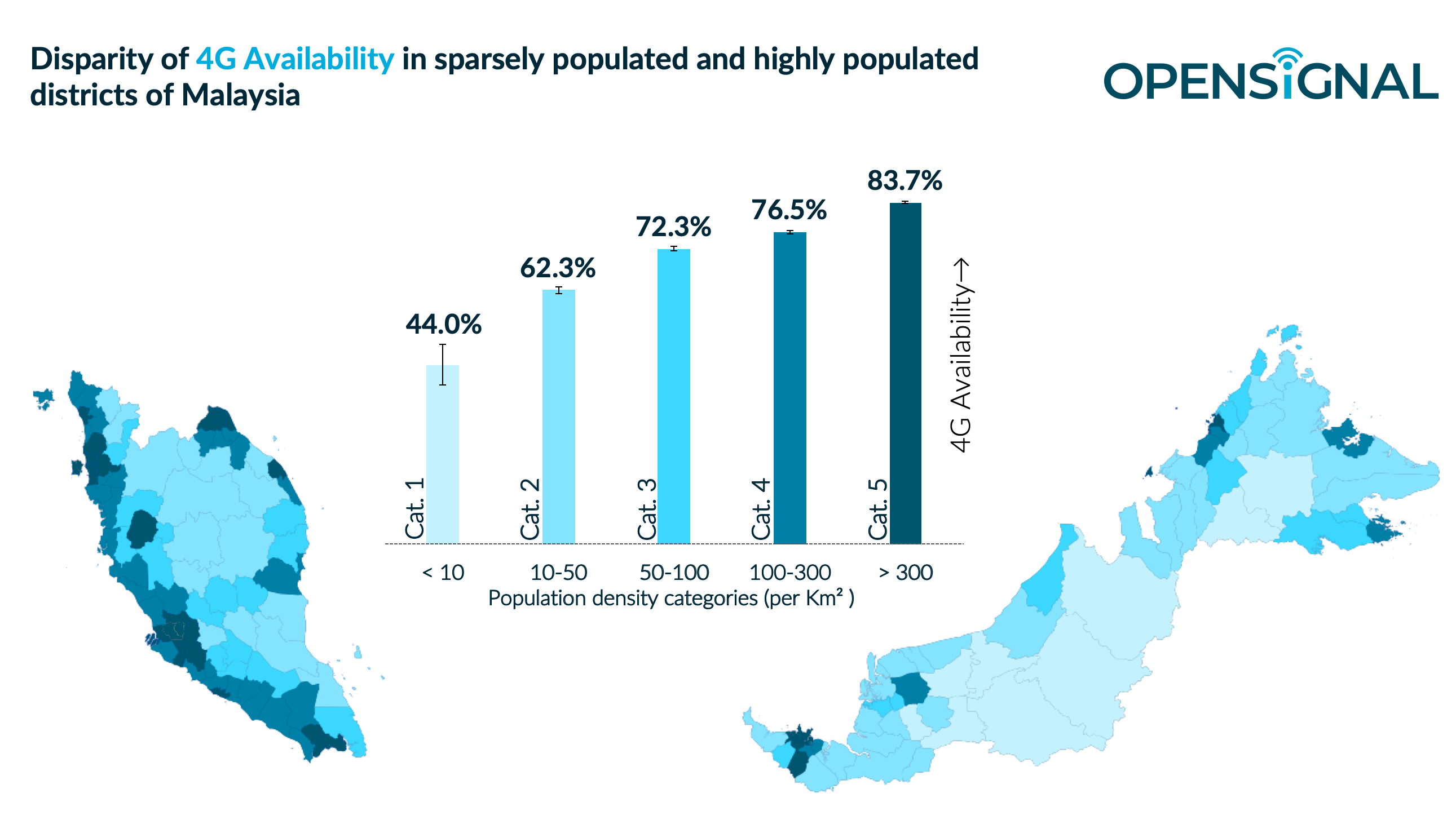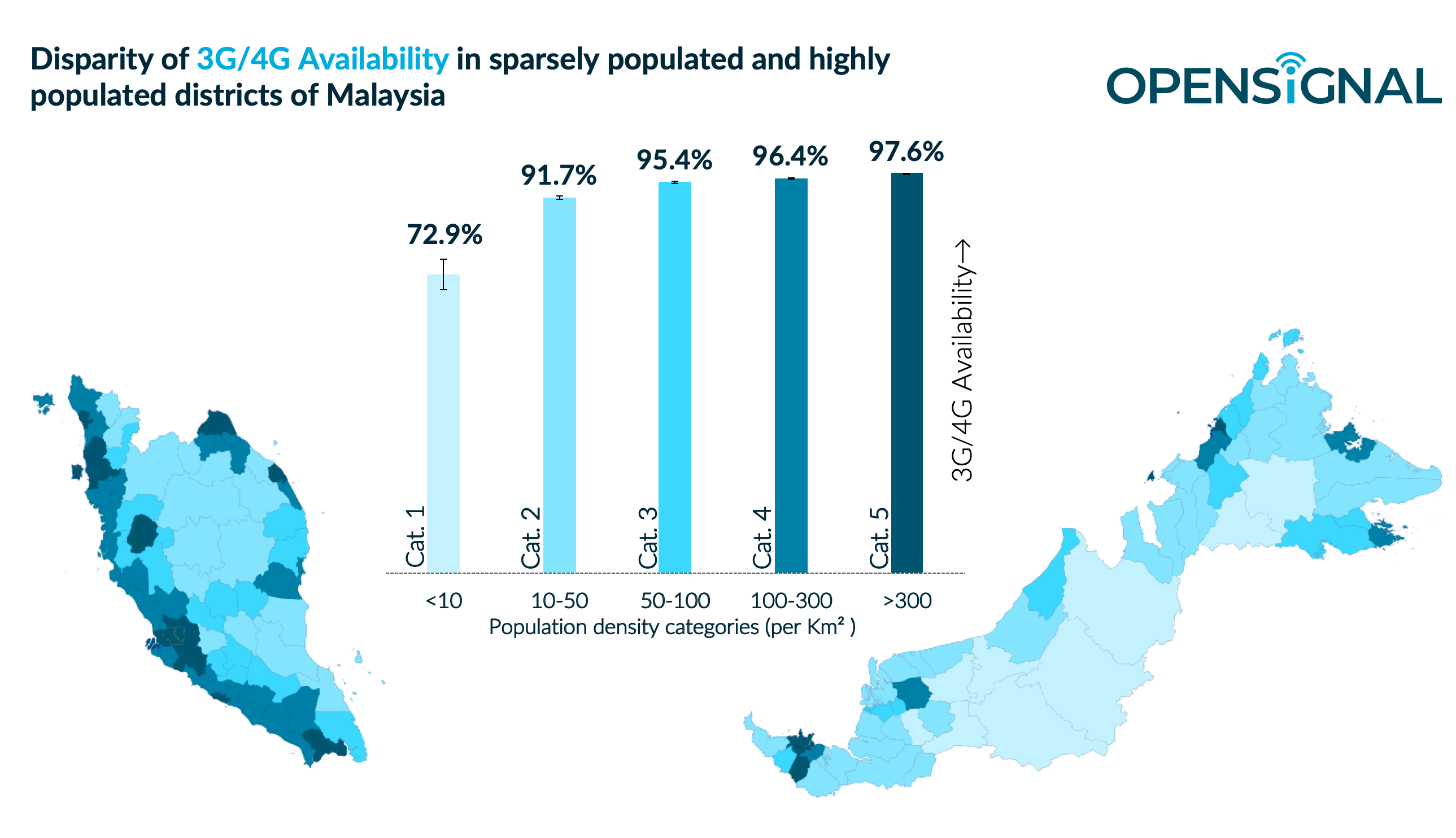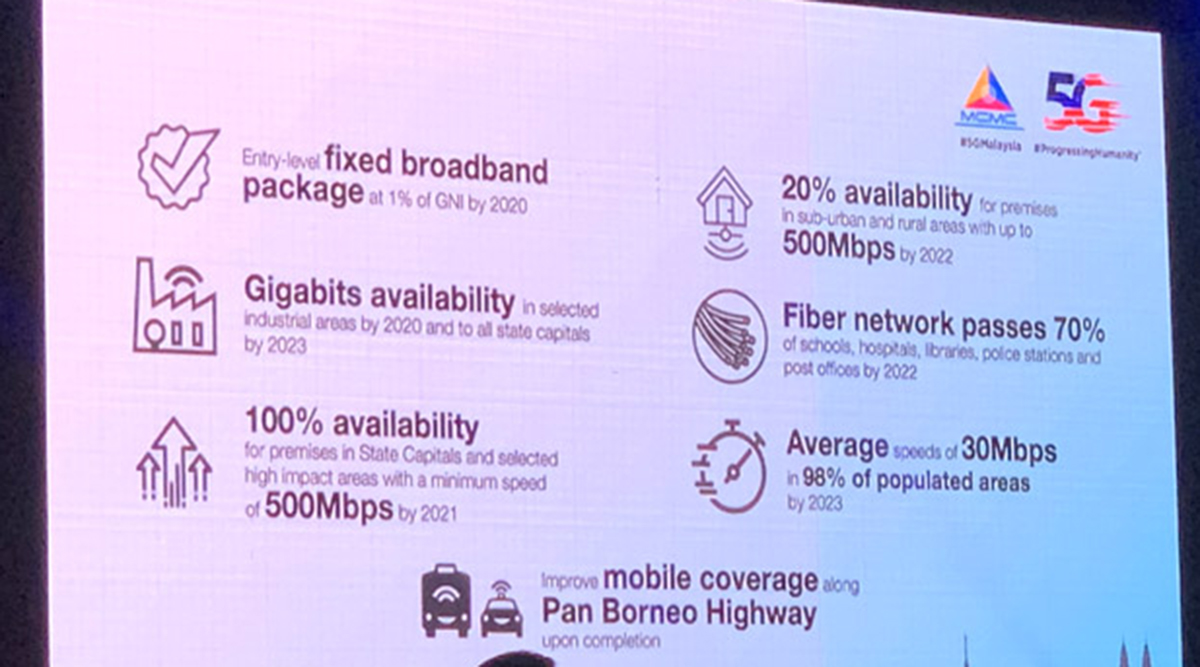While 5G is just right around the corner, there’s still a huge connectivity gap when you compare rural and big cities in Malaysia. According to Opensignal’s latest report, Malaysians in very low populated areas are hardly getting consistent 4G and it reinforces the need for the National Fiberisation and Connectivity Plan.
To measure the connectivity gap, Opensignal has mapped its 4G availability findings against the latest Malaysian Government Open data. They have classified 144 districts from 13 states and three federal territories into five different categories based on their respective population densities.
For districts with a population density of 50 people per square KM and below, 4G availability is at 62.3% while in districts with a sparse population of under 10 people per square KM, it went down to just 44%. That’s almost 40% gap with high-density areas.

As a comparison, residents in larger towns and cities with population above 100 people per square KM are getting at least 76.5% 4G availability. Even if you include 3G coverage in the equation, the least populated districts are only getting 72.9% availability. This means they are getting at least 3G 3/4 the time and for the remaining 1/4, they are either getting just 2G or possibly no signal at all.

With poor connectivity, people living in remote towns will not enjoy the same opportunity as urban areas. For operators, it may not be feasible to expand its network in low-density areas. Apart from the high cost of setting up infrastructure in remote areas, it makes more business sense to put more network investment in areas that can serve more customers.
This is where the government initiatives come in. With Universal Service Provision (USP) program which is funded through contributions by telcos, operators can be given funds to roll out and improve existing infrastructure in underserved areas.
According to Opensignal, the USP Time 3 plan has called upon operators to ensure mobile coverage is available in areas with population of at least 80 people per square KM. To make it more economical to upgrade the network, operators are also urged to avoid unnecessary infrastructure duplication and to use spectrum optimally.
It is also worth mentioning that with the recent transition to digital TV, the 700MHz spectrum that’s used by analogue TV can be reallocated to improve mobile coverage. If 700MHz is used for LTE, it can provide twice the coverage radius compared to 1800MHz, which is equivalent to 12 times the coverage area.

Looking at the broader picture, the NFCP plan which requires a total investment of RM21.6 billion over 5 years, is targeted to provide Malaysians with an average of 30Mbps connectivity in 98% of populated areas by 2023. The plan also aims to provide 70% fibre network coverage for schools, hospitals, libraries, police stations and post offices by 2022. In Sabah and Sarawak, the plan also targets to improve mobile coverage across the Pan Borneo Highway upon completion.
During the recent Budget 2020 announcement, the government has also allocated RM250 million to enhance connectivity in rural areas via Satellite with emphasis on Sabah and Sarawak.
[ SOURCE ]








